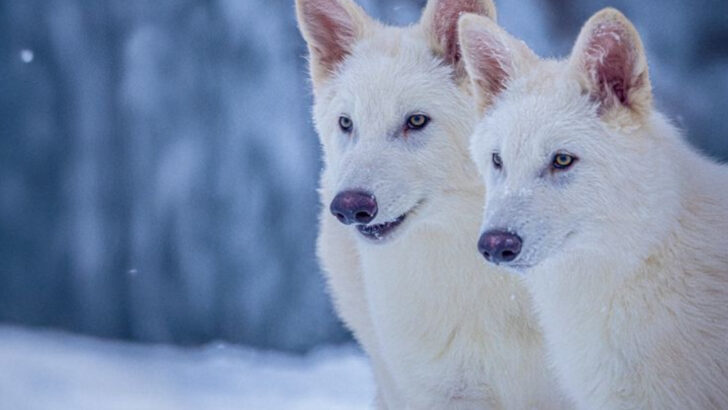Dire wolves, the legendary creatures closely associated with fantasy series like Game of Thrones, were once real animals that roamed the Earth. Though extinct today, they captivate our imagination just as their fictional counterparts do. Here, we explore thirteen fascinating facts about these magnificent creatures that any Game of Thrones fan would find enthralling.
Fact 1: Larger Than Life
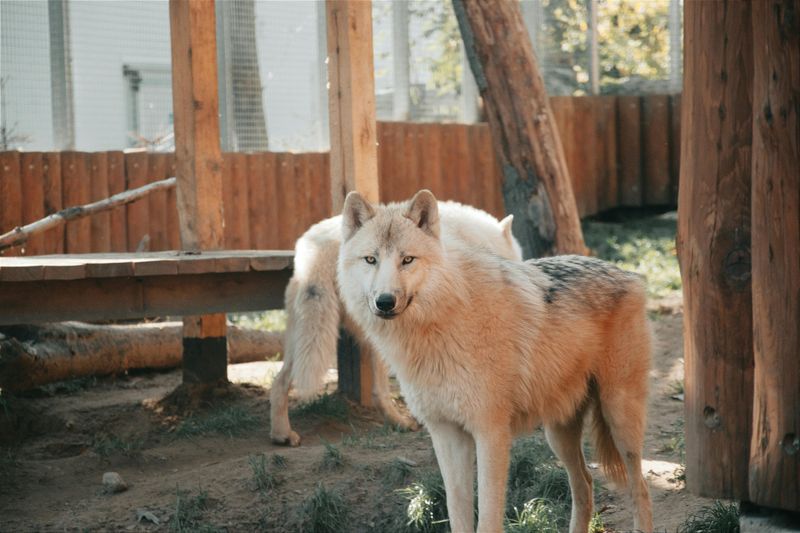
Standing tall with an imposing frame, the dire wolf was larger than its modern gray wolf cousins. Imagine a creature that could weigh as much as 150 pounds, with jaws capable of crunching through bones. Such size and strength allowed it to dominate its environment. The dire wolf’s formidable presence was a testament to nature’s ability to adapt and thrive in the harsh Pleistocene era. Its robust build made it a feared predator, ensuring its status as a top-tier carnivore. This impressive stature captivated the imagination of people, inspiring tales of legendary beasts.
Fact 2: Ancient Lineage
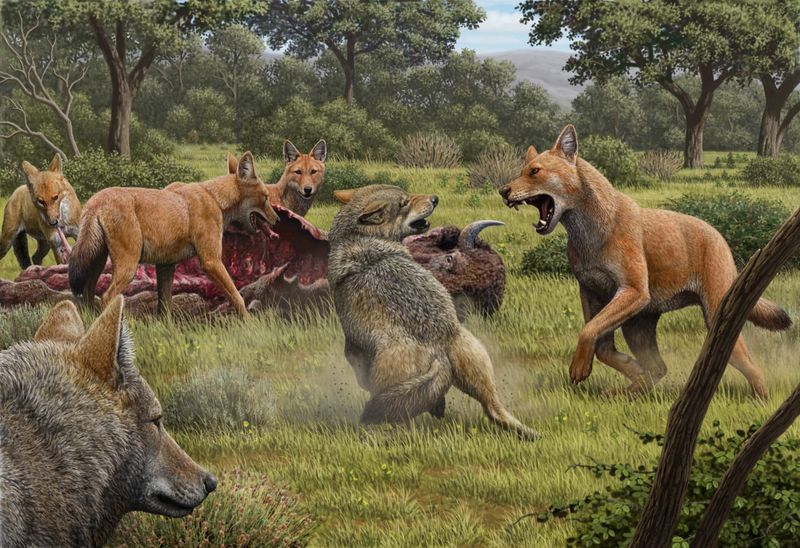
Dire wolves weren’t just fierce; they had a storied lineage tracing back thousands of years. Emerging during the Late Pleistocene, these creatures evolved alongside mammoths and saber-toothed cats. Their genetic legacy speaks to a time when Earth was wild and untamed. The dire wolf’s adaptation to diverse environments highlights its survival prowess. Ancient hunters and gatherers likely revered these wolves, forming early cultural connections. With their pack mentality, they demonstrated cooperation and cunning. Today, these ancient ties continue to intrigue scientists, shedding light on prehistoric ecosystems and predator-prey dynamics.
Fact 3: Fossil Treasures
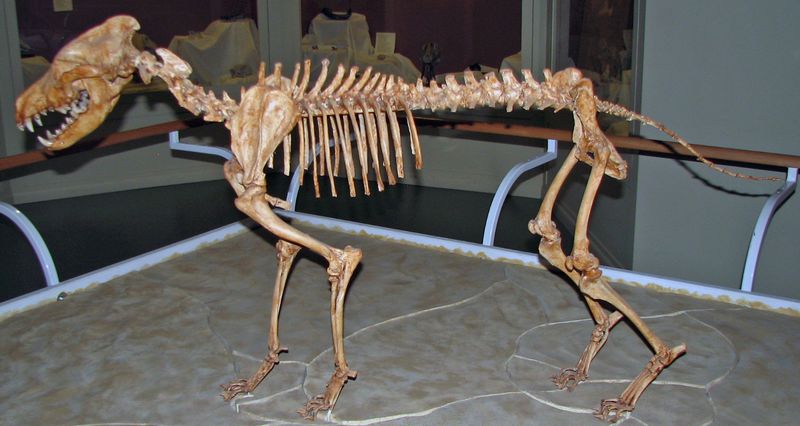
The La Brea Tar Pits in Los Angeles have given us a wealth of dire wolf fossils. These sticky tar deposits trapped countless animals, preserving them for millennia. Among the finds, dire wolf remains are especially abundant, offering insights into their lives. The fossils reveal details about their diet, behavior, and even illnesses they suffered. Scientists meticulously study these bones, piecing together the story of these majestic predators. As visitors gaze upon these relics, they connect with a world long past, where dire wolves once roamed free and wild across the land.
Fact 4: Diverse Prey
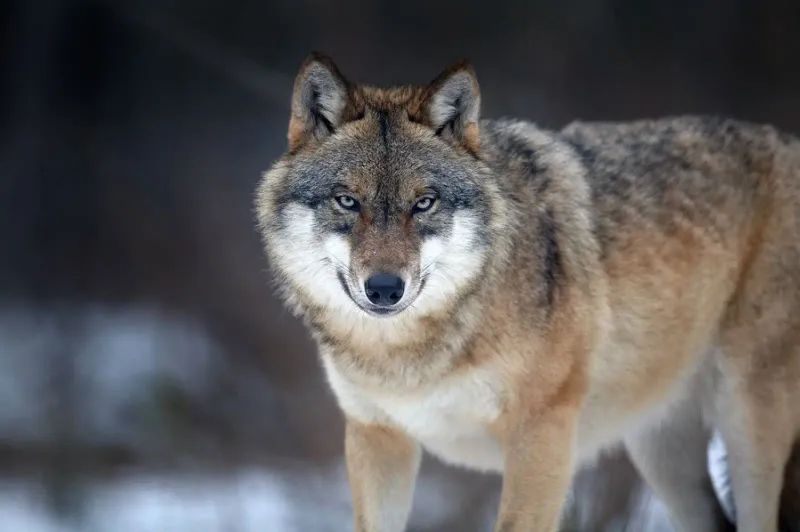
Dire wolves were versatile hunters, preying on an array of animals. Their menu included horses, bison, and even young mammoths. Such diversity in their diet exemplified their adaptability. This varied prey selection ensured survival in changing climates. With keen instincts, dire wolves coordinated attacks, displaying remarkable intelligence. Their hunting prowess was unmatched, cementing their role as apex predators. As they roamed across plains and forests, they shaped the ecosystems around them. This dynamic interaction between predator and prey painted a vivid picture of life during their time, full of struggle and survival.
Fact 5: Jaw Power

The dire wolf’s jaw was a marvel of evolution. Equipped with strong muscles and sharp teeth, it could crush bones with ease. This ability allowed it to access marrow, a vital nutrient source. Such a powerful bite set it apart from other predators, giving it a competitive edge. The robustness of its jaws reflected dietary adaptability, a key to survival. By studying their dental structure, scientists gain insights into the dire wolf’s feeding habits. This understanding helps reconstruct ancient food webs and predator-prey relationships. Their impressive bite force remains a topic of fascination today.
Fact 6: Extinction Mystery

The extinction of dire wolves remains a subject of scientific intrigue. Around 13,000 years ago, as the Ice Age ended, their numbers began to dwindle. Climate change altered landscapes, while competition with humans and other predators intensified. The arrival of new species and prey scarcity added pressure. Scientists study this extinction event to understand broader ecological shifts. By examining fossil records, they piece together the dire wolf’s final days. These investigations provide lessons on resilience and adaptation. Although the exact cause remains elusive, research continues to shed light on this prehistoric mystery.
Fact 7: Genetic Legacy
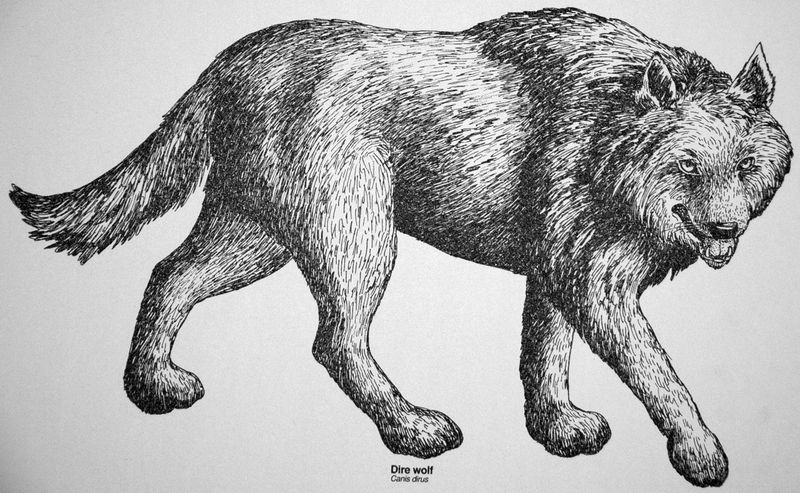
Despite their extinction, dire wolves left a genetic imprint on the world. Recent studies reveal that they diverged from the lineage of modern wolves around six million years ago. This discovery reshapes our understanding of canid evolution. Their genetic makeup offers clues about their unique adaptations. By analyzing ancient DNA, scientists explore how dire wolves thrived in their environment. This research bridges the gap between past and present, highlighting evolutionary pathways. The dire wolf’s genetic story captivates biologists, offering a glimpse into the intricacies of nature’s design and the complexity of life on Earth.
Fact 8: Cultural Impact
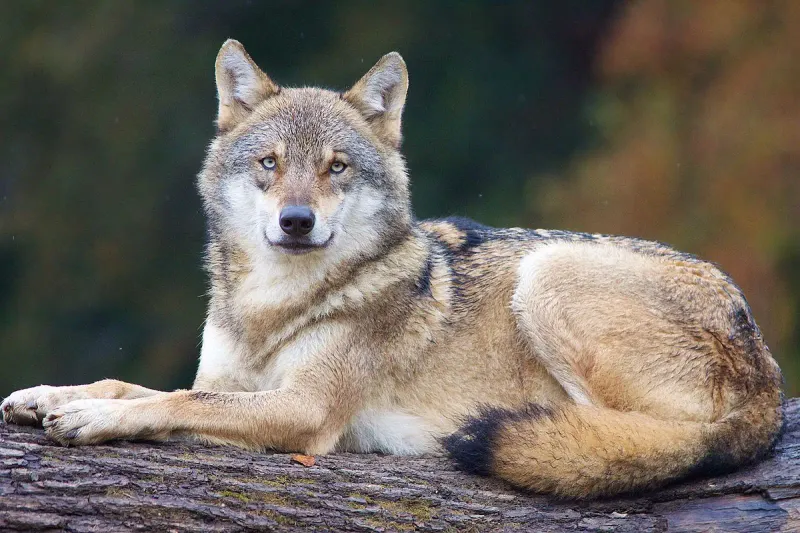
Dire wolves have left an indelible mark on human culture. They feature prominently in myths, symbolizing strength and endurance. Early humans undoubtedly encountered these formidable creatures, weaving tales of their encounters. Such stories passed down through generations, shaping legends and folklore. The dire wolf’s presence in popular media, like Game of Thrones, speaks to its enduring allure. As symbols of primal power, they captivate our imagination. By exploring their cultural significance, we connect with our ancestors’ fears and fascinations. This shared history enriches our understanding of human-animal relationships and the stories that define us.
Fact 9: Adaptation Skills
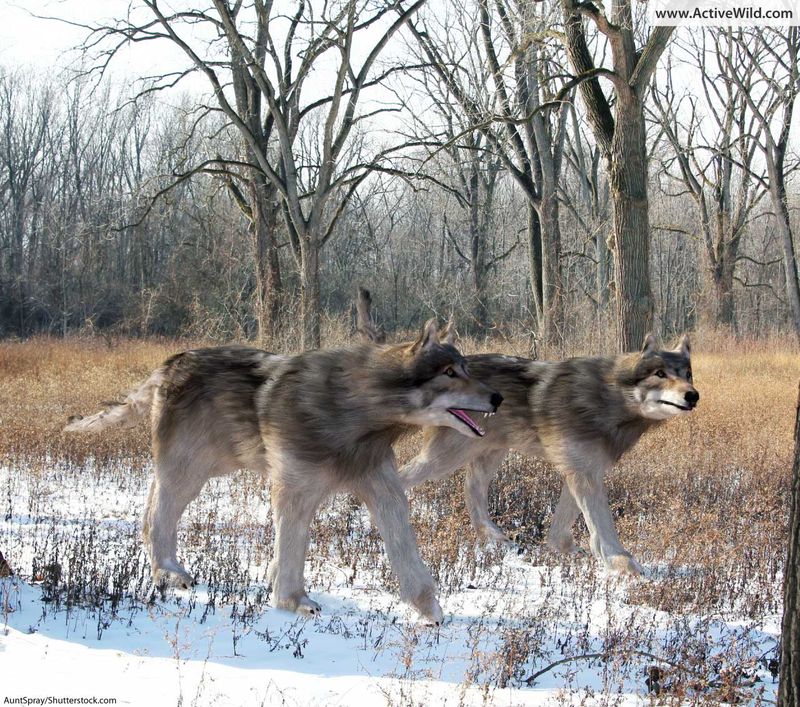
Dire wolves were masters of adaptation. Capable of thriving in diverse habitats, from icy tundras to temperate forests, they exemplified resilience. This adaptability ensured their presence across vast territories. Their thick fur provided insulation against harsh climates, while keen senses aided in hunting. Such traits allowed them to exploit various ecological niches. By studying their adaptive strategies, scientists glean insights into evolutionary success. These lessons resonate today, as species face similar challenges. The dire wolf’s story of adaptation serves as a testament to nature’s ingenuity and the survival instincts that drive all living creatures.
Fact 10: Social Dynamics
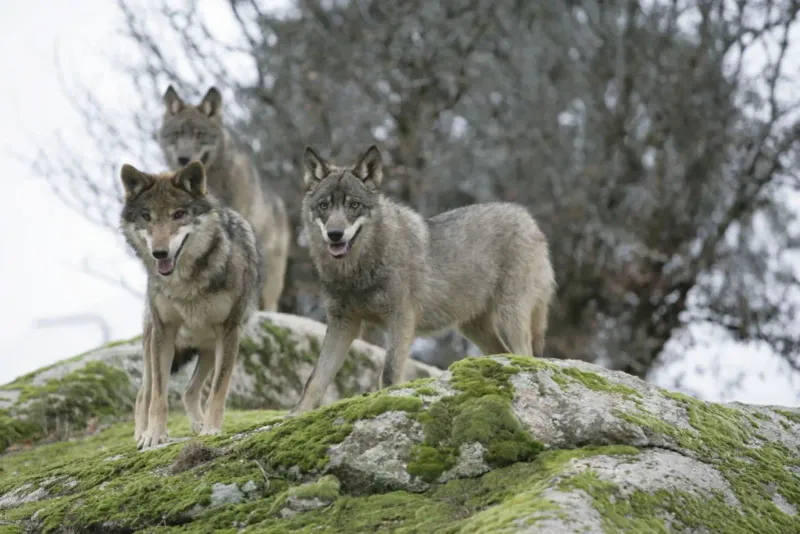
Pack life defined the dire wolf’s existence. Living in groups facilitated cooperative hunting and protection. Their social dynamics mirror those of modern wolves, showcasing complex hierarchies and bonds. Such interactions ensured survival and fostered learning. Young wolves grew within these social structures, inheriting skills vital for life. By observing these dynamics, scientists uncover parallels with other social animals, including humans. The study of their interactions enriches our comprehension of animal behavior. Through these insights, we appreciate the role of community in survival, reflecting the interconnected nature of life itself.
Fact 11: Artistic Representations
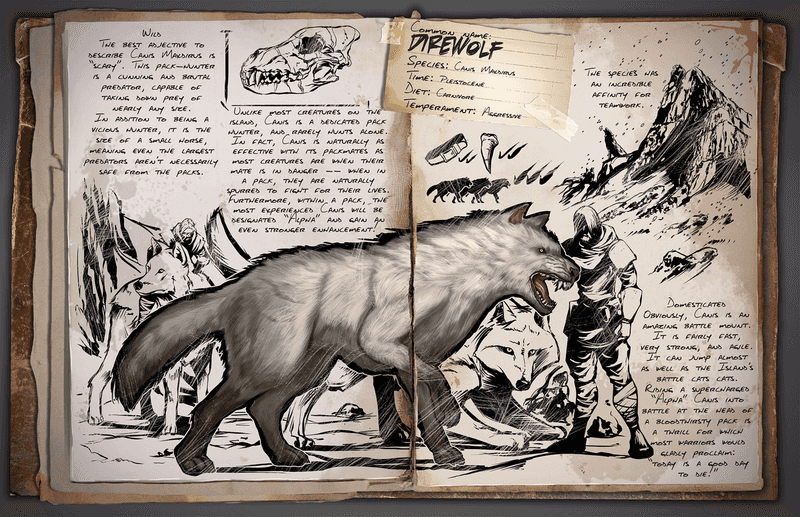
Artistic depictions of dire wolves endure in ancient cave paintings. Early humans immortalized these creatures, capturing their essence on stone canvases. Such art offers a glimpse into the minds of our ancestors. By portraying dire wolves, they conveyed respect and awe. These images reflect the profound connection between humans and nature. Studying these representations illuminates cultural values and beliefs. Artists today continue this tradition, inspired by the dire wolf’s legacy. As we admire these artworks, we engage in a dialogue across time, appreciating the beauty and mystery of the natural world.
Fact 12: Scientific Discoveries
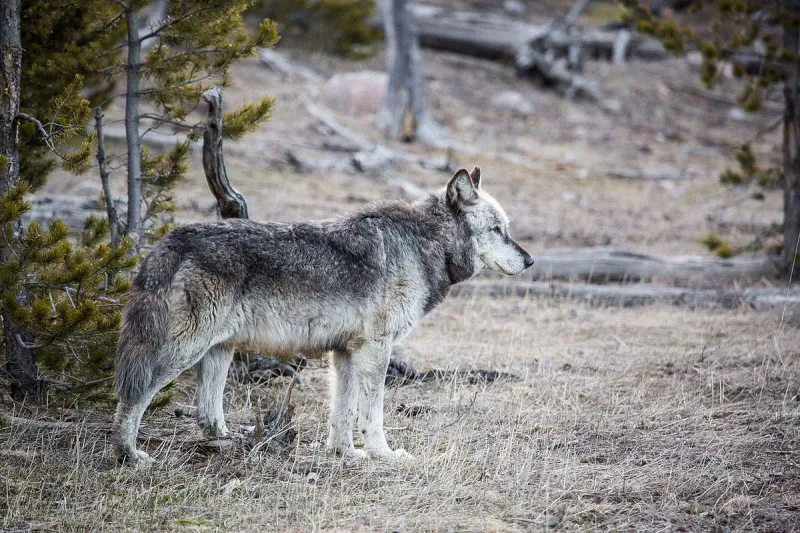
Modern science continues to unravel the secrets of dire wolves. Advances in technology allow paleontologists to analyze fossils with unprecedented precision. From examining bone structure to extracting ancient DNA, discoveries abound. These findings offer a clearer picture of their biology and ecology. Collaborative research spans disciplines, from genetics to climatology, painting a holistic portrait of these creatures. As scientists publish new data, our understanding of dire wolves evolves. This ongoing exploration demonstrates the dynamic nature of scientific inquiry. The quest for knowledge about these legendary wolves remains a captivating journey, fueled by curiosity and discovery.
Fact 13: Enduring Fascination
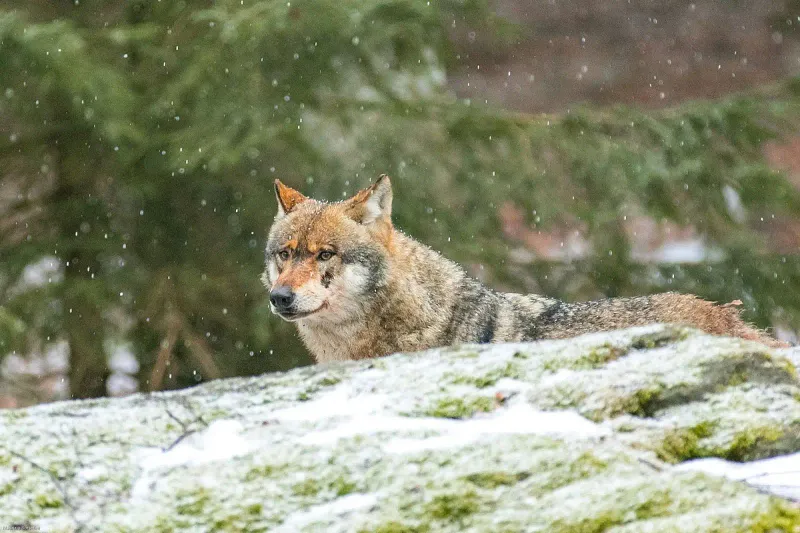
Dire wolves captivate minds even today. Their mystique permeates popular culture, from literature to television. As iconic symbols, they inspire a sense of wonder and adventure. This fascination reflects a yearning for connection to the past. Within fantasy realms, dire wolves embody themes of loyalty and strength. Their presence in stories resonates with audiences, forging emotional bonds. This enduring appeal highlights the timeless allure of nature’s wonders. By celebrating dire wolves, we honor the wild spirit that once roamed our world. They remind us of the untamed beauty that continues to inspire and enchant.

